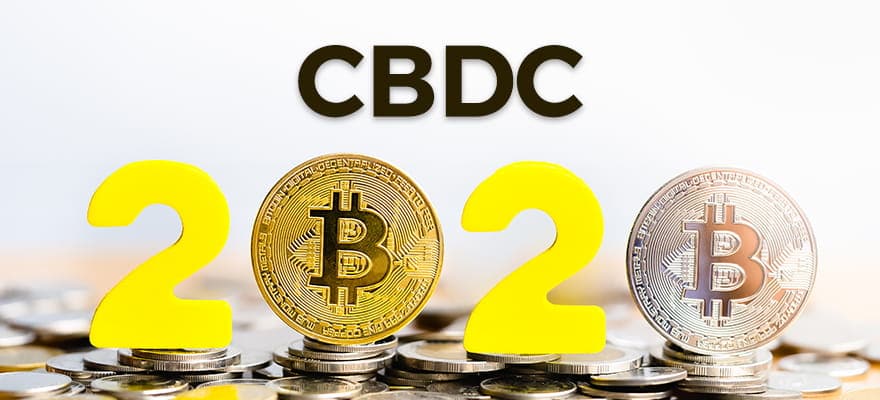2020 will go down in history as The Year™ of many things: COVID, of course; the year of one of the most divisive US presidential elections in history. (And, perhaps for some crypto hopefuls, the year that Bitcoin regained $20k.)
However, 2020 will also likely go down in history as the beginning of a new financial era: one that is primarily digital in nature. Specifically, 2020 may be remembered as the year that central bank digital currencies, or CBDCs, entered the international financial policy conversation in a serious way.
Indeed, for the past several months, it almost seems as though another country or international body is announcing a new study, pilot program, exploration of, or report on how a CBDC might work in its jurisdiction.
In addition to China, which announced the upcoming launch of its own national digital currency several years ago, several other nations have announced plans to launch digital currencies. The Bahamas recently became one of the first countries in the world to officially launch a CBDC, which was dubbed the 'Sand Dollar'; just this week, Lebanon's central bank governor said the country is preparing to launch a digital currency in 2021.
“Market Participants Will No Longer Tolerate Delays of Hours, Let Alone Days, for Transactions to Settle.”
Why is this happening at this particular moment in time?
Thomas Trepanier, Director of Business Development for Roxe at Apifiny, told Finance Magnates that “this is happening now because the needs of central banks’ constituents are becoming more pressing and complex.”

Thomas Trepanier, Director of Business Development for Roxe at Apifiny.
Indeed, Trepanier believes that the development of CBDCs will contribute to innovation that allows global business to be conducted more quickly: “banks, brokers, asset managers, and Fortune 500 corporations must remain competitive in a global market,” he said. “They need to allow for delivery versus payment in a T+0 (same day) world, one where the expectation is for funds' availability to be immediate.”
“Market participants will no longer tolerate delays of hours, let alone days, for transactions to settle. In a digital world where business decisions happen in a second or less, so goes the expectation that funds’ availability will follow suit.”
“CBDCs can address some of traditional finance’s current shortcomings, improving access, speed, cost, transparency, and security,” he said. “CBDCs can also help prepare digital economies to meet their Payments needs as cash use declines gradually.”
Beyond that, “CBDCs can also modernize financial value transfer for key functions like cross-border payments,” Trepanier said, referencing a Bank for International Settlements (BIS) survey published earlier this year. According to the survey’s results, nearly 80% of central banks that responded in 2019 indicated they are engaged in or plan to commence CBDC development.
“Distributed Ledger Technology Has Matured Significantly to a Point That CBDCs Are Now Possible.”
Additionally, Reuben Yap, Project Steward of Firo (formerly Zcoin), told Finance Magnates that CBDCs seemed to have “arrived” at this moment because, well, they can.
“Distributed ledger technology has matured significantly to a point that CBDCs are now possible,” he said.

Reuben Yap, Project Steward of the Zcoin cryptocurrency network.
“China's aggressive move with their DCEP initiative as part of its vision and the internationalization of RMB along with Libra's efforts have raised many eyebrows, so much so that many central banks may be worried that they'll get left behind.”
Indeed, Maurizio Raffone, Chief Financial Officer of Credify, told Finance Magnates that CBDCs are taking a big step forward now “due to a convergence of factors.”
“Distributed-ledger technology is now well-proven and beyond the ‘proof-of-concept’ stage, the Central Banks’ drive to reduce infrastructure costs for the banking sector and the greater focus on tools to combat money laundering and criminal financings,” he said.
COVID-19 Highlighted the Need for Improvement in Financial Systems
And then, of course, there is COVID.
“COVID relief has also exposed the limitations of the current banking system,” Yap told Finance Magnates. For example, in some cases, “stimulus checks often took months to reach their intended recipients. A CBDC could rapidly enable these transactions, putting them directly into citizens’ hands within a matter of days.” Indeed, an early draft of the US stimulus bill proposed stimulus payments through a 'Digital Dollar'.
And in many respects, COVID seems to have slammed its foot on the gas of digitization. Ido Sadeh Man, Founder & Foundation Council President at Saga Monetary Technologies, told Finance Magnates that “coronavirus has shone a light on how it is not only possible for us to move large parts of our life online, but how quickly technology can adapt to support this digital demand.”
“For example, many shops will now only accept contactless payments in order to comply with social distancing measures and minimise touchpoints, having spent many years focused on cash,” he said. “While digital transformation in finance has been the direction of travel for many years, Central Banks are now feeling the pressure to explore digital money more seriously.”
If, When, and How?
Indeed, it seems that CBDCs have surpassed the point of 'if'; they will almost certainly become a part of daily life. Now, the question is: 'when?'
“I think we're looking at around two years for CBDCs to take off in some form in certain regions and countries, and maybe five years for them to be much more widespread,” Yap told Finance Magnates.
Thomas Trepanier also sees CBDCs entering onto the scene within a two-year timeline: “as more regulators increasingly show interest in cryptocurrencies and understand the value of CBDCs (many of whom have already made announcements to this effect), expect to see CBDCs increasingly become a part of international finance over the next two years,” he said.
After the matter of 'when' has been established, governments will need to decide exactly how their CBDCs will be issued.
“As global interest accelerates, most central banks’ key question isn’t if they will issue a CBDC, but rather how they will deploy it,” Trepanier said.
What will this look like on a practical level? “Getting the tech component correct may feel daunting, but recent history demonstrates that well-executed shifts can positively transform banking,” he said.
After all, banking has already changed massively within the last twenty to thirty years, even within the last five to ten years: “for instance, we have seen banks’ technology transition from legacy bank books and personal check registers to today’s ATM cards and mobile banking apps — all designed to manage the debits and credits of a currency with no intrinsic value, but rather represent an IOU from the federal government,” Trepanier said.
“In contrast, with a CBDC, we now have a new cash alternative. Tokenization of fiat requires a more secure architecture.”
And Trepanier believes that we can only stand to benefit from the introduction of CBDCs: “sticking with the current centralized infrastructure prohibits central bank growth and transparency,” he said. “Adding Blockchain technology into the system, however, enables traditionally slow markets to speed up significantly.”
“They can take advantage of greater liquidity and a cross-border corridor with DLT while opening up FX price discovery across high-quality, high-volume exchanges. In addition, with dollar-pegged stablecoins, banks are not subject to the price volatility of some digital assets.”
”What If We Could Make Money Democratic, Writing It into the Currency’s Code? Could Digital Money Be Designed to Be More Stable Than Fiat Money?”
However, there is some question as to what improvements central bank digital currencies (CBDCs) will bring to their users’ lives.
Ido Sadeh Man told Finance Magnates that “simply making a currency digital does not make it the future of money.”

Ido Sadeh Man, Founder & Foundation Council President at Saga Monetary Technologies.
“In fact, Central Banks deploying CBDCs risk entrenching the challenges of ‘traditional money’, which was conceptualized hundreds of years ago, in the future,” he explained. “Technology empowers us to do more than just make today’s view of money digital - we think there are bigger questions to ask.”
For example, “what if we could make money democratic, writing it into the currency’s code? Could digital money be designed to be more stable than fiat money?”
After all, “we’ve already seen how currency value can be volatile, based on politics and events within its mother country. These events are not the doing of the currency holders or investors, yet it is they who so often pay the price.”
“The beauty of cryptocurrencies is that they are trying to solve various challenges of traditional money, so simply digitizing that money is almost wasting the opportunity we have,” he said, referencing his own company’s Sögur project. “We should be asking how technology can improve money.”
Just as Easy as One-Two-Three
There is also the question of how the proliferation of CBDCs could affect cryptocurrency markets.
“A rise in CBDC usage would probably weigh most visibly on stablecoins, digital coins tethered to the value of a single currency,” Ido Sadeh Man told Finance Magnates. After all, CBDCs may overtake the role that stablecoins currently play in crypto markets.
Beyond that, Thomas Trepanier believes that “embracing the CBDC will help break down the phobias and barriers that many have toward cryptocurrencies.”
“CBDCs should help pave the way towards greater acceptance of cryptocurrencies like Bitcoin as the traditional players continue to adjust the way they regulate and manage payment transactions going forward,” he said. “Blockchain models such as instant global settlement networks that support CBDCs or cryptocurrencies, or both, are emerging and breaking down many barriers to trading created by entry costs.”
Of course, there is no guarantee that CBDCs will, in fact, be cryptocurrencies; in other words, they may not be blockchain-based at all.
However, “for those countries whose central banks are looking to provide a CBDC, a blockchain-based instant global settlement network offers an efficient way to do this,” Trepanier said.
After all, it’s just as easy as one-two-three: “If they are starting from scratch, such a network can tokenize their underlying sovereign fiat currency by minting it into a stablecoin that can then be minted into their CBDC. If their CBDC already exists or is far along in development, it can also easily transact on this kind of network."
What are your thoughts on CBDCs? Let us know in the comments below.

















